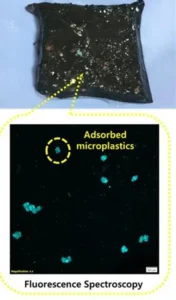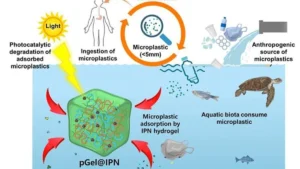Space Tourism
News: Entrepreneur and pilot Gopi Thotakura will become the first Indian to venture into space as a tourist on mission of Blue Origin ((American Space startup).
-
- He will become the second Indian to venture into space after Indian Army’s Wing Commander Rakesh Sharma in 1984.
Space Tourism:
-
- Space tourism, a burgeoning sector within aviation, aims to offer tourists the extraordinary opportunity to venture into space for recreational, leisure, or business pursuits.
Types of Space Tourism:
-
- Sub-orbital: Reach altitudes of approximately 100 kilometers and will have a few minutes in space.
- Orbital: Orbital space flights will reach altitudes of over 400 kilometers and orbital space tourists tend to spend days in space.
- Lunar Space Tourism: Lunar space tourism aims to complete full trips to the moon.
Reasons for the Rise of Space Tourism:
-
- Technological Advancements: Reusable rockets and spacecraft design improvements have made space travel more affordable and accessible.
- Wealthy Individuals’ Interest: Growing fascination among affluent individuals with space exploration as a novel experience has fueled the expansion of space tourism.
Khavda Renewable Energy Park
News: Adani Group will build world’s largest renewable energy park in Gujarat.
Location: Khavda in Gujarat’s Kutch.
Why Khavda For Renewable Energy Park ?
-
- Khavda has second-best solar radiation in India after Ladakh.
- Wind speeds five times that of the plains.
Investment:
-
- Adani Green Energy Ltd, India’s largest renewable energy company, will invest Rs 1.5 lakh crore.
Importance:
-
- This energy park will generate 30 megawatts of clean electricity at Khavda: 26 GW of solar and 4 GW of wind generation capacity.
- The outer flange of the energy park is just one km from the international border with Pakistan. The one-km buffer is manned by BSF.
- Khavda at its peak will generate 81 billion units that can power entire nations such as Belgium, Chile and Switzerland,
Hydrogel & Microplastics
News: Researchers at the Indian Institute of Science (IISc) have designed a sustainable hydrogel to remove microplastics from water.
Definition: A hydrogel is a three-dimensional (3D) network of hydrophilic polymers that can swell in water and hold a large amount of water.
Composition: Hydrogels can be derived from natural materials like proteins (e.g., gelatin) or polysaccharides (such as alginate from seaweed), as well as synthetic polymers.
Properties: Characterized by their remarkable water absorbency, hydrogels are often described as “water-loving” or “water-swollen” due to their ability to swell and retain significant water content within their structure.

Applications:
-
- Drug Delivery: Hydrogels serve as carriers for medications, gradually releasing drugs in a controlled and targeted manner when implanted in the body.
- Wound Healing: Creating a moist environment conducive to wound healing, hydrogels can be laden with growth factors or other healing agents to enhance the recovery process.
- Contact Lenses: Some contact lenses utilize hydrogels, providing softness, comfort, and moisture retention for prolonged wear.
- Non-medical Applications:
- Agriculture: Hydrogels aid in water retention within soil, optimizing moisture levels for plant growth.
- Diapers: Utilized for their exceptional absorption properties, hydrogels enhance the effectiveness of diapers.
- Tissue Engineering: Serving as scaffolds for tissue regeneration, hydrogels play a crucial role in tissue engineering endeavors.
Microplastics
-
- Microplastics are small plastic pieces less than five millimeters long which can be harmful to our ocean and aquatic life.

Type:
-
- Primary microplastics are tiny particles designed for commercial use like cosmetics, microfibers shed from clothing and other textiles, such as fishing nets.
- Secondarymicroplastics are particles that result from the breakdown of larger plastic items, such as water bottles caused by exposure to environmental factors, mainly the sun’s radiation and ocean waves.
- Microplastics, like larger plastic items, resist breakdown and can persist for centuries, causing environmental harm.
- On beaches, they appear as small colored plastic fragments in sand, while in oceans, they are ingested by marine life, posing further ecological threats.
Renewable Energy Technology Action (RETAP)
- Definition: RETAP was announced by India and US jointly in 2023 under Strategic Clean Energy Partnership (SCEP).
- Strategic Clean Energy Partnership (SCEP): Established in 2021, SCEP is a collaborative initiative between India and the US aimed at accelerating innovation and deployment of clean energy solutions.
- Objective: RETAP aims to fast-track the development of essential technologies required to meet ambitious clean energy targets in both nations.
- Focus Areas: RETAP’s primary focus areas include green/clean hydrogen, wind energy, and ocean/tidal energy.
- Themes: RETAP’s work is structured around five key themes:
-
- Research & Development
- Piloting & Testing of Innovative Technologies
- Advanced Training & Skill Development
- Policy and Planning for Advancing RET and enabling technologies
- Investment, Incubation and Outreach programmes.
-
Man Portable Anti-tank Guided Missile (MPATGM) Weapon System
News: DRDO & Indian Army conduct successful trials of indigenous Man Portable Anti-tank Guided Missile Weapon System.
Definition: The MPATGM Weapon System is a portable missile launcher designed for infantry units to target and eliminate enemy tanks and armored vehicles.
Developed by DRDO: The MPATGM Weapon System is an indigenous creation by the Defence Research & Development Organisation (DRDO).
Components:
-
-
- MPATGM System: Comprising the MPATGM missile, launcher, Target Acquisition System, and Fire Control Unit.
-
Features:
-
-
- Lightweight and Portable: Designed for single-soldier operation, enhancing infantry mobility on the battlefield.
- Long-range Precision: Capable of effectively engaging armored targets from significant distances, providing critical anti-tank capability to infantry units.
- Versatility: Equipped with day/night and top-attack capabilities, enhancing effectiveness across diverse operational scenarios.
- Dual-Mode Seeker: Incorporates a dual-mode seeker functionality, combining imaging IR and SAL capabilities, thereby enhancing the missile’s capability for tank warfare.
-
Facts for Prelims
Doxxing
It is derived from the phrase “dropping dox” (documents).
Meaning: Doxxing is the intentional revelation of a person’s private information online without their consent, often with malicious intent.
This involves sharing personal data like phone numbers, addresses, and IDs, along with sensitive information such as private photos.
Exposing such details can lead to harassment, stalking, and other real-life dangers for the victim.
Prevention: Adjust social media settings, use strong passwords, report through National Cyber Crime Reporting Portal, etc.
